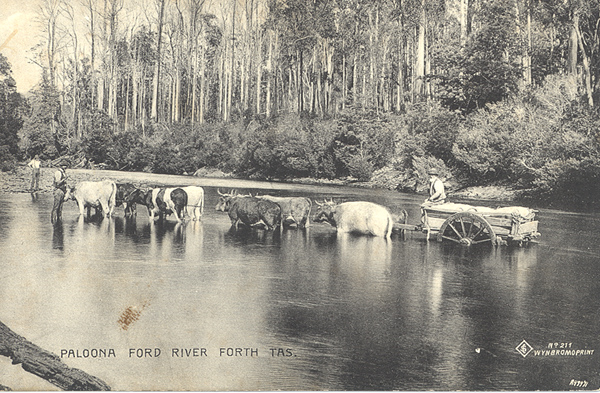 |
 |
|
The North-West Coast
The North-West Coast was first settled by the Van Diemen's Land Company in the late 1820s, but the genuine pioneers were the independent bush farmers. James Fenton was the first to buy crown land west of the Mersey River, selecting 100 acres at the Forth River in 1840, aged eighteen. A year later John King, a former VDL Company superintendent, bought 640 acres at Table Cape, and William Medwin selected 500 acres at the Black River. More bush farmers began buying land when the government surveyed and subdivided the forest country in the 1850s and 1860s. Most blocks were between 50 and 100 acres, and virtually all blocks were on or near tidal river estuaries, because all transport was by sea. Not even packhorses could penetrate the barrier of temperate rainforest and jungle-like undergrowth. Pioneer farmers faced the daunting task of carving arable land from forests so dense that sunlight seldom penetrated the canopy. Little by little they began to cultivate the rich volcanic soils to grow potatoes and pasture cows and sheep. Some settlers were ex-convicts or descendants of convicts, but others were former VDL Company servants, and many arrived under the sponsorship of church and missionary societies. These immigrants gained a reputation for their character and industry and provided many community leaders. After the Second World War many industries began, employing large numbers, and the Coast thrived. These industries closed from the 1980s, but were replaced by forestry (with a woodchip plant at Hampshire), many smaller industries, and tourism, especially following the introduction in 2002 of the ferries, Spirit of Tasmania 1 and 2. (See also Burnie and Devonport.) Further reading: K Pink, And wealth for toil, Burnie, 1990. Kerry Pink |
Copyright 2006, Centre for Tasmanian Historical Studies |
